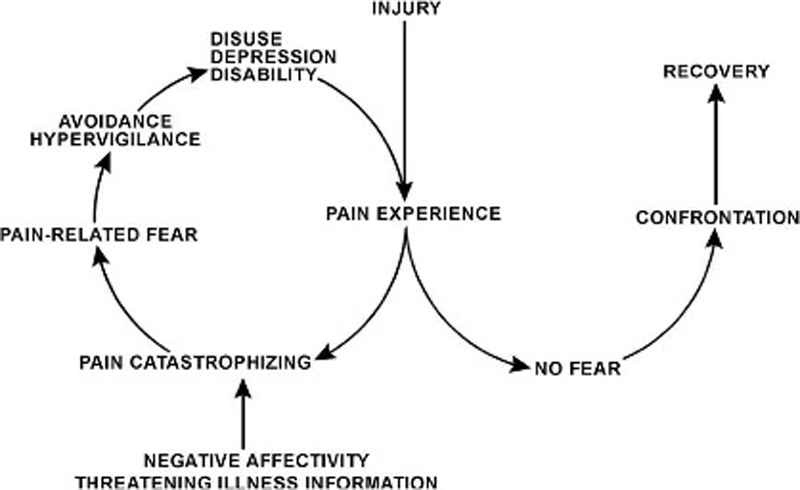Rethinking the Fear Avoidance Model: Toward a Multidimensional Framework of Pain-related Disability
SOURCE: Pain. 2013 (Nov); 154 (11): 2262–2265
Timothy H. Wideman, Gordon G. J. Asmundson, Rob J. E. M Smeets, Alex J. Zautra,
School of Medicine,
Johns Hopkins University,
Baltimore, MD, USA.
Introduction
Nearly 20 years ago the Fear Avoidance Model (FAM) was advanced to explain the development and persistence of disabling low back pain. The model has since inspired productive research and has become the leading paradigm for understanding disability associated with musculoskeletal pain conditions. The model has also undergone recent expansion by addressing learning, motivation and self-regulation theory [10, 34]. In contrast to these extensions, however, one relatively constant aspect of the model is the recursive series of fear-related cognitive, affective, and behavioral processes shown in Figure 1 [31, 32, 34].
There are more articles like this @ our:
Despite the endurance and popularity of these cyclical relationships their level of empirical support remains unclear. For instance, recent prospective studies have failed to support the proposed sequential relationships between psychological risk factors [5, 36]. Also, the validity of several fundamental assumptions that underlie these cyclical relationships has yet to be fully examined, including the characterization of fear as phobia, the inextricable link between pain and disability, and the independence of disability from pain-related physiological processes. As the FAM continues to evolve, it is critical to clarify whether its cyclical relationships should be retained. The purpose of this topical review is to evaluate the empirical support and theoretical assumptions of the FAM’s cyclical relationships and to highlight implications for future theoretical advancement.
Figure 1.
Graphical Display of the Fear Avoidance Model (reproduced from Vlaeyen and Linton, 2000 & 2012 [32, 34])

Empirical support for cyclical relationships
SOURCE: Read the rest of this Full Text article now!




Leave A Comment